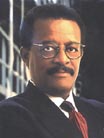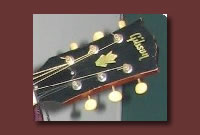Johnny Cochran – Here We Go Again.
 I was out of the loop last week, so I just saw at Right We Are that Johnny Cochran has signed onto the defense of the “Sniper Case.†Cochran’s position thus far is that the defendants in the case were, in fact, victims. Yes, victims – either of a set up or downright racism.
I was out of the loop last week, so I just saw at Right We Are that Johnny Cochran has signed onto the defense of the “Sniper Case.†Cochran’s position thus far is that the defendants in the case were, in fact, victims. Yes, victims – either of a set up or downright racism.
He also intends to use the “The-evidence-is-all-circumstantial†nonsensical, smokescreen defense. He stated, “”Thus far, all the evidence I’ve seen is purely circumstantial, no eye-witnesses, nothing at all to put this man and a child at the scene of these events, nothing at all.†This load of horseshit sounds good as long as one doesn’t know that virtually all evidence is circumstantial, except for eyewitness testimony, such as “I saw Tom shoot Mary,†and that most people serving time in prison are serving time based on circumstantial evidence either presented at trial, or about to be presented, thereby leading to a guilty plea.
Please indulge me for a moment while I take a brief digression here to try to clear up the Perry Mason – Matlock “It’s all circumstantial†baloney. It is ambitious of me to think that a couple of paragraphs can properly deal with this long-held misconception, but I’ll give it a go anyway.
There are two types of evidence – direct evidence and circumstantial evidence.
Direct evidence requires only that the fact finder believe the testimony of the witness in order to come to the ultimate conclusion as to the ultimate facts at issue. So, if the witness testifies, “I saw Tom shoot Mary,†the fact finder can come to the ultimate conclusion as to whether Tom, in fact, shot Mary based solely on whether the fact finder believes the testimony. Of course, there are numerous ways to challenge the weight that ought to be given to such testimony (e.g. The witness’s ability to properly perceive the event; The witness’s bias, etc.). However, the distinguishing characteristic of direct evidence is that the fact finder needs not make any inferences based on the evidence presented to come to the ultimate conclusion that Tom did, in fact, shoot Mary. The fact finder need only believe the testimony.
By contrast, circumstantial evidence does require that the fact finder make one or more inferences based on the evidence in the testimony to come to the ultimate conclusion that Tom shot Mary. For example, the testimony might be, “I heard three gunshots in the next room. I immediately opened the door to the room, and I saw Mary lying on the floor with half her head shot off and two bullet wounds in her chest. There were no other doors in the room, and Tom almost knocked me over as he ran from the room with a gun in his hand.â€
I think it is fair to say that this constitutes pretty convincing evidence that Tom shot Mary. However, because the witness did not actually see Tom shoot Mary, it is circumstantial evidence. And, as such, it still requires the fact finder to make the inferences from the evidence presented (i.e. the gunshots, the number of wounds, the lack of any other exit or entrance to the room and Tom’s fleeing with a gun in his hand immediately after the shooting) to come to the ultimate conclusion that Tom, in fact, shot Mary.
It should be apparent that the issue is the weight of the evidence, rather than whether it is direct or circumstantial evidence. Some direct evidence is hardly worthy of any weight at all, given the well-known problems with the reliability of eyewitness testimony, while some circumstantial evidence (as in the hypothetical example above) is virtually damning.
Johnny Cochran knows all this, but he banks heavily on being able to mislead a jury into believing that “circumstantial evidence†is the equivalent of bad evidence or no evidence at all.
One particular type of “circumstantial evidence†Cochran intends to attack is the ballistic evidence that showed that the bullets taken from the victims were fired from the defendants’ rifle. He stated, that “ballistic evidence has its drawbacks, just like DNA,†and that he has “acquired the countries [sic] foremost authority on ballistic evidence for the defense team.â€
He apparently also intends to make much of the now-infamous white van that some people reported leaving the area of some of the shootings. In an interview with Larry King, Cochran stated, “Larry, in every attack, witnesses indicated a suspicious White Van was noticed leaving the scene”. “Where is the White Van Larry, Where is it”?
How putridly familiar does all this sound?
Can Leo Terrell be far behind?





Very worthwhile article. I’m currently working on something similar in connection with the Michael Jackson case. Your points concur very closely with my own.
Thanks
Comment by Magpie — February 20, 2005 @ 11:22 am